✓ Joining us on our Whatsapp Channel: 💬 Explore and Escape!.
Booking through us:
✓ 🏩 🛌 Handpicked Luxury Stays in Budget: Booking.com | Agoda.com
✓ 🍹⛱️ Deals on Private xfers, SIM Cards, City tours, Day trips : 📍🗺️ GetYourGuide | 🛵🧳 Klook
com/landmarks/oceania-landmarks/landmarks-of-australia/”>landmarks in Europe, and so are in China.
China, a land steeped in history and culture, is dotted with landmarks that narrate its story.
From the ancient Great Wall that stands as a testament to China’s strength and resilience, to the sparkling skyscrapers of Shanghai that symbolize its rapid economic development, China’s landmarks embody the country’s past, present, and future.
Each one a masterpiece in its own right, these landmarks serve as beacons of China’s greatness and inspire awe in all who witness their grandeur.
1. Wudang Mountains
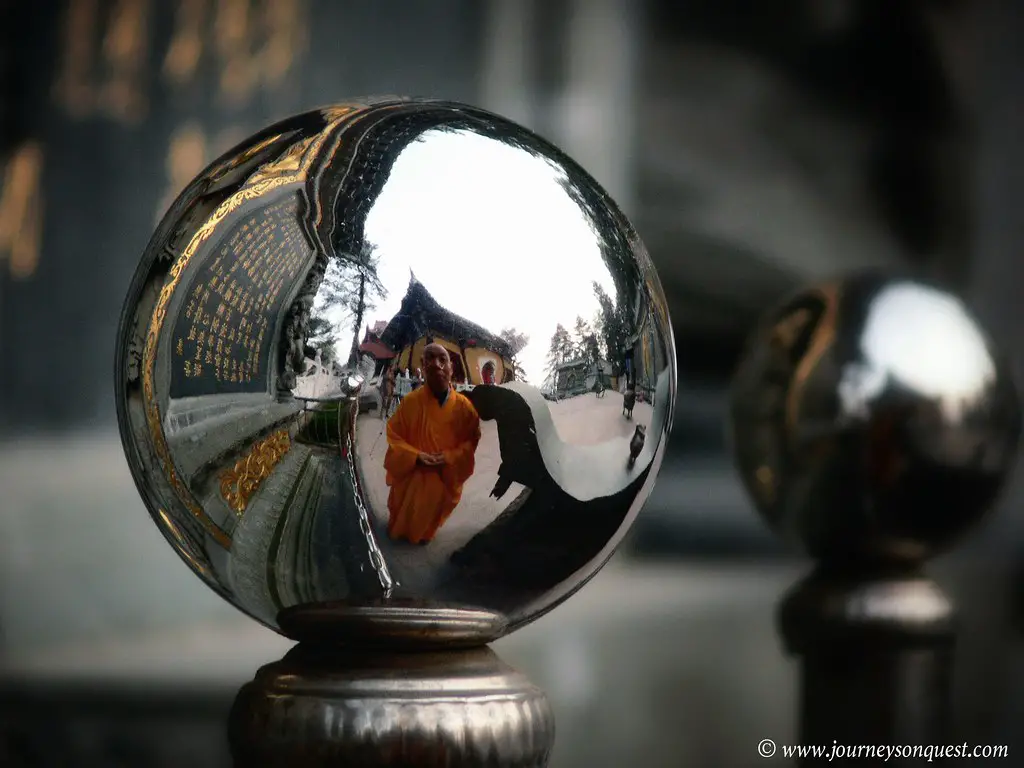
A famous mountain range in central China, known for its association with Daoism and for being the birthplace of Wudang martial arts.
What to see or do: Visit the Wudang Mountains to explore the many ancient temples and pavilions scattered throughout the range, hike scenic trails, and witness traditional martial arts performances.
Don’t miss: The Purple Cloud Palace, a beautiful temple that is the largest and most well-preserved on the mountain, and the Golden Hall, an impressive structure that sits on the peak of Tianzhu Peak and offers stunning views of the surrounding landscape.
Insider travel tips: Be sure to bring comfortable walking shoes and clothing appropriate for hiking, as many of the attractions require climbing up and down stairs.
Consider staying overnight on the mountain to experience its peaceful atmosphere and beautiful sunrises or sunsets. Avoid visiting during national holidays or weekends, as the mountains can become incredibly crowded with tourists.
2. Mount Huangshan
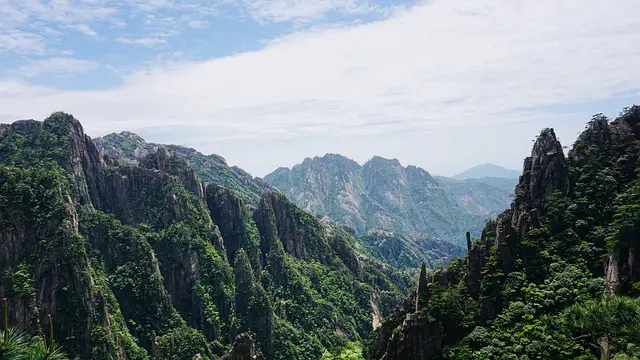
Mount Huangshan (also known as Yellow Mountain) is a stunning mountain range in Anhui Province, China, famous for its unique granite peaks and breathtaking views.
What to see or do: Visitors can enjoy hiking and mountain climbing while marveling at the natural beauty of the landscape, surrounded by clouds and mist, which inspired countless poets, artists, and photographers.
Don’t miss: The iconic sunrise and sunset views, when the mountain ranges appear to be on fire, with colorfully painted clouds reflected in the pools and lakes.
Also, the peculiarly shaped rock formations and walking on the infamous suspension bridges.
Insider travel tips: The best time to visit Huangshan is during spring or autumn for mild temperatures and fewer crowds.
3. Qingcheng Mountain
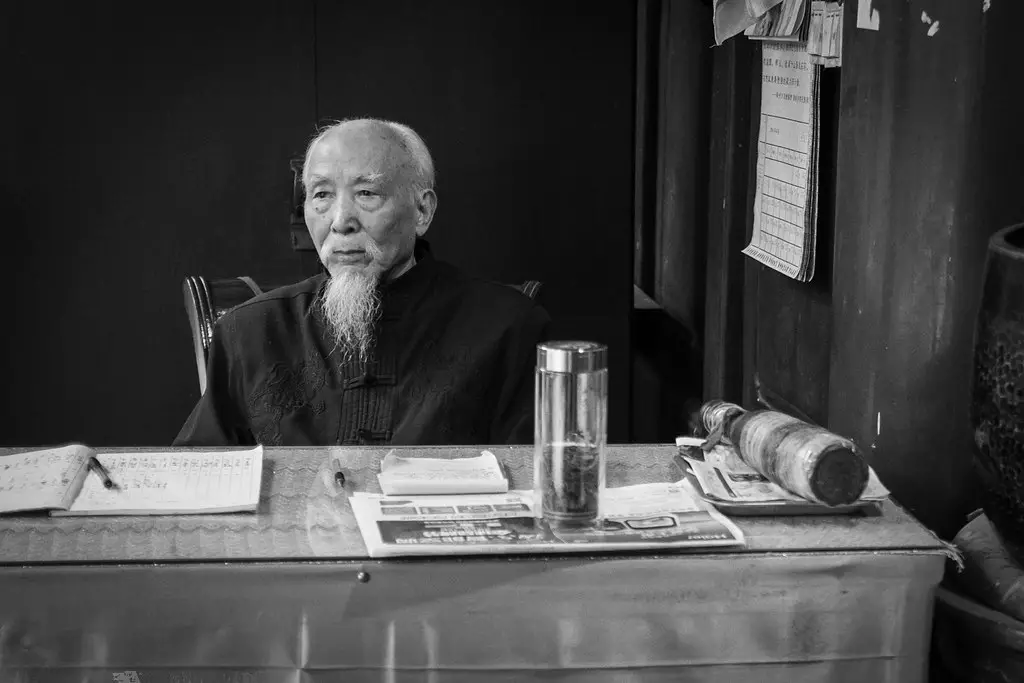
Qingcheng Mountain is a sacred Taoist site located in Sichuan province, China.
What to see or do: There are plenty of scenic trails and temples to explore on Qingcheng Mountain, with highlights including the Jianfu Palace, Shangqing Palace, and Tianshi Cave.
Visitors can hike through misty forests, enjoy hot springs and waterfalls, or take a cable car up to the summit for stunning panoramic views.
Don’t miss: The Sanqing Hall, the oldest surviving wooden Taoist shrine in China, is a must-see. The temple houses three statues depicting the top deities of Taoism – Yuanshi Tianzun, Lingbao Tianzun, and Daode Tianzun.
Insider travel tips: Visitors should wear comfortable shoes and bring plenty of water as the hike to the summit can be steep and challenging.
Arrive early in the day to avoid crowds and enjoy the peaceful surroundings.
It’s also recommended to stay overnight in the nearby town of Dujiangyan to fully experience the tranquil beauty of Qingcheng Mountain.
4. Hongcun Village
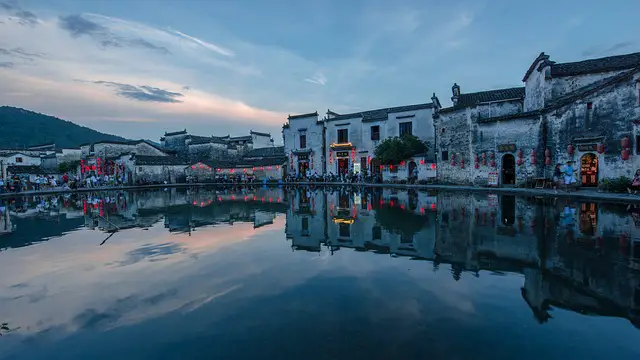
Hongcun is an ancient village located in southern Anhui Province, China. It is renowned for its well-preserved traditional Hui-style architecture and picturesque countryside scenery.
What to see or do: – Stroll through the village and admire the intricate architecture of the traditional Hui-style houses.
Don’t miss: – The Chengzhi Hall, the largest and most impressive building in the village, with ornate carvings and colorful decorations.
Insider travel tips: – Plan to spend at least half a day in the village to fully appreciate its beauty and tranquility.
5. Jiayuguan Pass
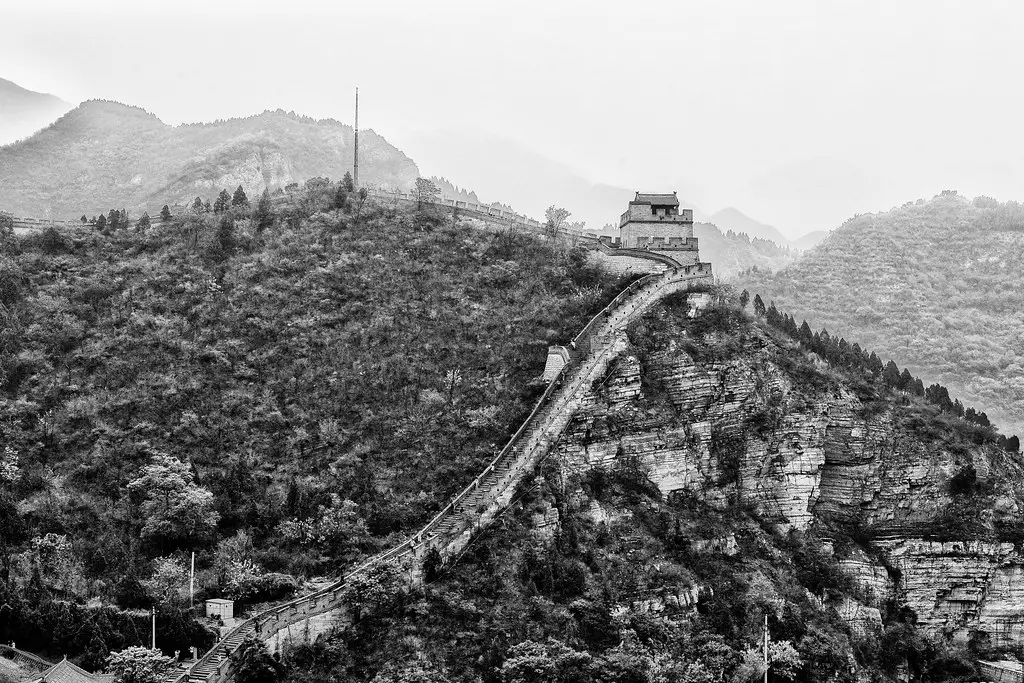
Jiayuguan Pass is an ancient fortress located in the city of Jiayuguan in Gansu Province, China.
It is known as the “First and Greatest Pass Under Heaven” as it marked the western end of the Great Wall of China.
What to see or do: Visitors can explore the pass and its surrounding scenery, including the vast Gobi Desert and snow-capped Qilian Mountains.
The pass offers stunning views of the Great Wall and visitors can learn about the history and significance of the fortification.
They can also visit the nearby Jiayuguan Museum to see artifacts and exhibits related to the Silk Road.
Don’t miss: The Overhanging Great Wall is a highlight of Jiayuguan Pass. It is a section of the Great Wall that appears to hang precariously from a cliff face.
Visitors can also see the “Wei and Jin Tombs”, a group of ancient tombs located near the Jiayuguan Pass.
Insider travel tips: – Visit during the annual Jiayuguan International Ice and Snow Festival in December and January for a unique experience.
6. Huashan Mountain
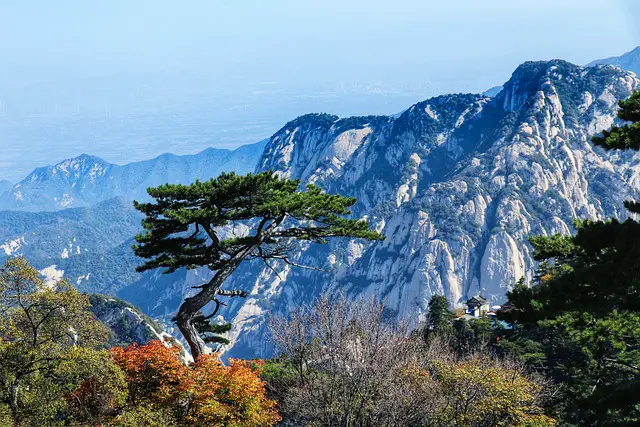
A breathtaking mountain in China’s Shaanxi province with five main peaks and scenic hiking trails.
What to see or do: Visitors can hike the various trails to experience the stunning natural scenery, climb steep cliffs, and cross narrow gorges on footbridges.
The most popular trails are the Plank Walk and the Sky Bridge.
Don’t miss: Watching the sunrise or sunset from the East Peak, the highest peak of the mountain at 2,160 meters. Also, visit the Taoist temples located on the mountain, including the famous Gold Lock Pass and Jade Spring Temple.
Insider travel tips: It’s best to avoid visiting during Chinese holidays, as the mountain can get very crowded. Bring warm clothing, as the temperature drops significantly as you ascend the mountain.
Additionally, wear sturdy shoes and consider hiring a local guide if you’re hiking alone.
7. Longmen Grottoes
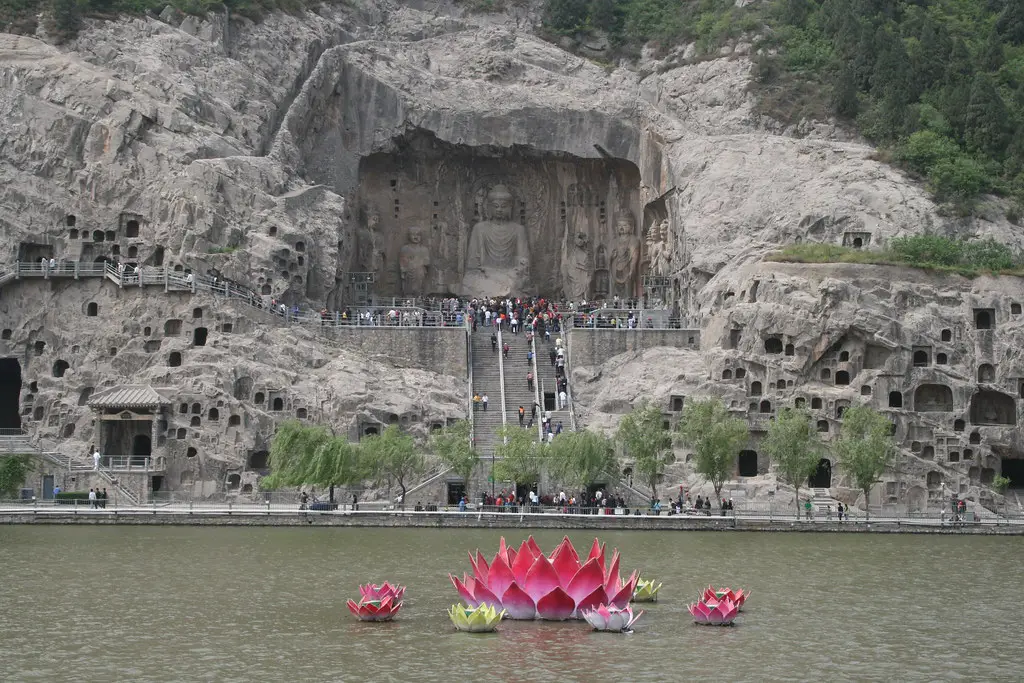
The Longmen Grottoes are an impressive collection of Buddhist rock carvings in Luoyang, China, featuring over 100,000 statues and images, spanning over 1,400 years of Chinese Buddhist art.
What to see or do: Visitors can wander through a series of caves and niches carved into the limestone cliffs, admiring the intricate details and the massive scale of the sculptures.
The largest statue is a 56-foot-tall depiction of the Buddha, while the smallest figures are just a few inches high.
Don’t miss: One of the highlights is the Fengxian Temple, which features a stunning set of sculptures depicting various figures from Chinese Buddhist mythology.
The Vairocana statue in the Grand Hall is also a must-see, as it is considered to be one of the finest examples of Chinese Buddhist art.
Insider travel tips: The grottoes can get quite crowded, especially during peak season (May to October), so it’s best to arrive early in the morning to avoid the crowds.
Also, be sure to wear comfortable walking shoes, as there is a lot of ground to cover.
Finally, consider hiring a guide to help you navigate the many different caves and temples and learn about the history and symbolism of the statues.